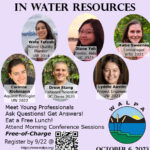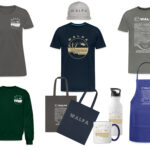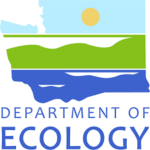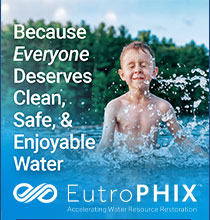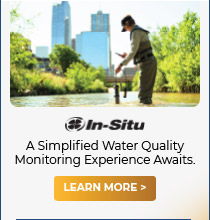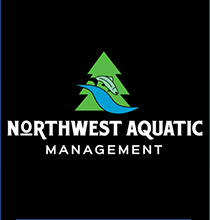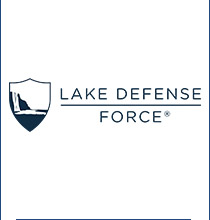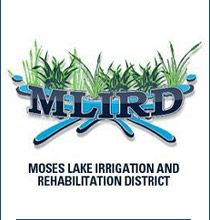Join us in Tacoma for WALPA’s 36th annual conference October 4-6!
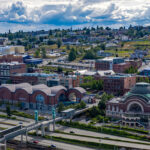 WALPA invites you to our 36th annual conference on the University of Washington-Tacoma campus. This year’s theme, Fish and Beyond in Our Lakes, was chosen to highlight effects of climate change, lake pollution, and lake management strategies on fisheries in Pacific Northwest lakes.
WALPA invites you to our 36th annual conference on the University of Washington-Tacoma campus. This year’s theme, Fish and Beyond in Our Lakes, was chosen to highlight effects of climate change, lake pollution, and lake management strategies on fisheries in Pacific Northwest lakes.
Our plenary speaker will be Jim Gawel, Ph.D., from the School of Interdisciplinary Arts and Sciences at the University of Washington-Tacoma. Jim will present on “Community-Engaged Research in Lakes with Undergraduates: Bridging Basic Science, Education, and Community Needs”.
Early career panel to be featured at October conference
A special event for students only (and those in their first few years out in the wild)!
Following Friday morning’s sessions, join not-so-seasoned professionals as they share their perspectives and experiences as young professionals in limnology and related fields.
Panelists will include Lyddie Austin, Project Engineers; Corinne Klohmann, Water Quality Scientist; Drew Stang, Environmental Scientist; Wafa Tafesh, Water Quality Planner; and Diane Yeh, Environmental Aide.
The WALPA merchandise shop is open!
Help support student scholarships while repping your favorite Washington lake protection association. Start shopping HERE!
Ecology reports on fifteen years of monitoring bass mercury levels in Washington lakes
Callie Mathieu, Washington State Department of Ecology
Since 2005, the Washington State Department of Ecology (Ecology) has been monitoring mercury concentrations in edible fillets of freshwater fish collected from lakes and reservoirs across the state. Each year we analyze fillet tissue from ten individual largemouth or smallmouth bass from six waterbodies and then re-sample those sites every five years to evaluate trends in mercury levels over time. A recent Ecology publication reported trends observed by the monitoring program between 2005 and 2019.
Mapping and remote monitoring technologies improve lake management decisions
WATERLINE SPONSORED CONTENT
by Terry McNabb, CLM
Aquatic Biologist/Certified Lake Manager, Aquatechnex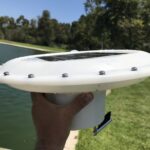
Us “old” lake managers have seen significant shifts in our ability to accurately and remotely obtain the data we need to make decisions. Before GPS/GIS mapping, we created bathymetry maps by doing soundings along a line and connecting the dots. We used dot grids over air photos to estimate acres. We used shoreline landmarks to apply products. Things have come a long way, although it is nice to know how to do it the old way just in case.
Hydro-acoustic mapping and remote monitoring are two effective tools we have adopted in our work.
Diluting Moses Lake to improve water quality since 1977
by Dr. Gene Welch, Limnologist and Professor Emeritus, University of Washington
and Shannon Brattebo, PE, Environmental Engineer, Tetra Tech, Inc.
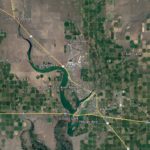 Renewed attention to the water quality of Moses Lake began in 2019 when high concentrations of microcystin were detected in nearshore algal scums. The Moses Lake Irrigation and Rehabilitation District (MLIRD) had already restarted — in 2017 — the systematic water quality program they had supported in the 1970s-1980s (Welch et al., 2019). The detection of toxic algae prompted formation of the Moses Lake Watershed Council to help develop support for recommendations to improve the lake’s quality. There is a long history of study and projects that led to improved lake quality from the 1960s when more than 90% of algal biomass was Aphanizomenon and total phosphorus (TP) was 154 µg/L. The lake improved from hypereutrophic to eutrophic through the 1980s and further to near-mesotrophic through the 2000s.
Renewed attention to the water quality of Moses Lake began in 2019 when high concentrations of microcystin were detected in nearshore algal scums. The Moses Lake Irrigation and Rehabilitation District (MLIRD) had already restarted — in 2017 — the systematic water quality program they had supported in the 1970s-1980s (Welch et al., 2019). The detection of toxic algae prompted formation of the Moses Lake Watershed Council to help develop support for recommendations to improve the lake’s quality. There is a long history of study and projects that led to improved lake quality from the 1960s when more than 90% of algal biomass was Aphanizomenon and total phosphorus (TP) was 154 µg/L. The lake improved from hypereutrophic to eutrophic through the 1980s and further to near-mesotrophic through the 2000s.
2023 WALPA scholarship winners announced
You could be a winner next year!
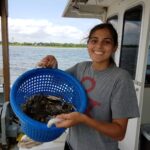 Congratulations to this year’s WALPA scholarship winners: Garret Homer, Nicole Doran, and Madison Schumacher!
Congratulations to this year’s WALPA scholarship winners: Garret Homer, Nicole Doran, and Madison Schumacher!

